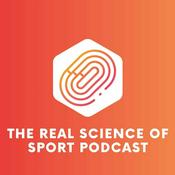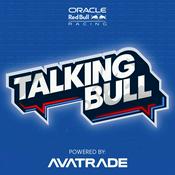309 episodes

310. What was your biggest running mistake this year?
2025/12/10 | 37 mins.
www.run4prs.comWe want to talk about running mistakes — because every runner makes them, and honestly, they teach us more than our wins sometimes.But here’s the important part: mistakes don’t make you weak. They make you wiser. If you’re willing to pause, reflect, and adjust — they can actually be the thing that levels you up for your next season.

309. How to know if you are ready to run a full marathon 26.2 miles
2025/12/04 | 45 mins.
www.run4prs.com for a free week of training

308. Assessing your strengths and weaknesses as a runner
2025/11/26 | 29 mins.
Today we’re diving into a game-changing question: 👉 What are YOUR strengths and weaknesses as a runner?If you want to train smarter—not just harder—this is a conversation you can’t skip. Knowing your strengths helps you double down. Knowing your weaknesses? That’s where real growth begins.Let’s get into it.www.run4prs.com for a free week of training

307. Are You Holding Yourself Back By Not Running at the Right Pace? Here’s How to Know 🧠📉
2025/11/14 | 43 mins.
307. Are You Running at the Right Pace? Here’s How to Know 🧠📉www.run4prs.com for a free week of training👉 Are you running at the right paces? Because if you’re feeling stuck, plateaued, or burned out… your pacing might be the problem.Today we’re breaking down how to figure out if you’re training too fast, too slow, or just plain wrong — and how to fix it.Prevents injuryBuilds the right fitness adaptationsKeeps you progressing over timeBut most runners? ❌ Run their easy days too hard ❌ Run hard days without enough recovery ❌ Never dial in their zones based on current fitnessThat’s like trying to bake a cake at the wrong temperature — even with the best ingredients, it just won’t come out right.

306. Sick of running? How to get your spark back
2025/11/03 | 29 mins.
Running is awesome… until it’s not. We fall in love with training cycles, goals, PRs — but sometimes? That grind catches up. You’ve been:Training back to back with no breakTied too tightly to your watch or paceComparing yourself constantlyPushing through stress outside of running, tooEventually, what was fun starts to feel like work. And your body and brain say, “I’m out.”Part 2: Signs You’re Burned Out (3:30–5:00) Here’s what it can look like: 😒 Every run feels like a chore 🛑 You keep skipping workouts but don’t feel better 😤 You’re irritated by runners who are “loving it” right now 📉 You’ve stopped seeing progress and don’t even careIf this sounds like you — the answer isn’t always “push through.” It might be time to pull back to move forward.
More Sports podcasts
Trending Sports podcasts
About Run4PRs
Listen to Run4PRs, The Grade Cricketer and many other podcasts from around the world with the radio.net app

Get the free radio.net app
- Stations and podcasts to bookmark
- Stream via Wi-Fi or Bluetooth
- Supports Carplay & Android Auto
- Many other app features
Get the free radio.net app
- Stations and podcasts to bookmark
- Stream via Wi-Fi or Bluetooth
- Supports Carplay & Android Auto
- Many other app features


Run4PRs
download the app,
start listening.



































